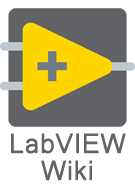The Type Specialization Structure has one or more subdiagrams, exactly one of which LabVIEW compiles and executes, depending on the order and the compilation result of the subdiagram. LabVIEW declines subdiagrams in order if they have syntax errors. LabVIEW accepts the first subdiagram that does not have syntax errors and ignores the remaining subdiagrams. If all subdiagrams have syntax errors, this structure accepts the last subdiagram. Syntax errors are errors within the structure, such as broken wires, not errors caused by subVIs or other dependencies.
Use this structure to customize sections of code in a Malleable VI (.vim) for specific data types. You also can use this structure in conjunction with the Assert Type VIs and functions to force a Malleable VI to accept only a subset of the acceptable Data Types or to decline specific data types.
Usage
Best practice
History
| Version
|
Change(s)
|

|
More info to come.
|
See Also
External Links

